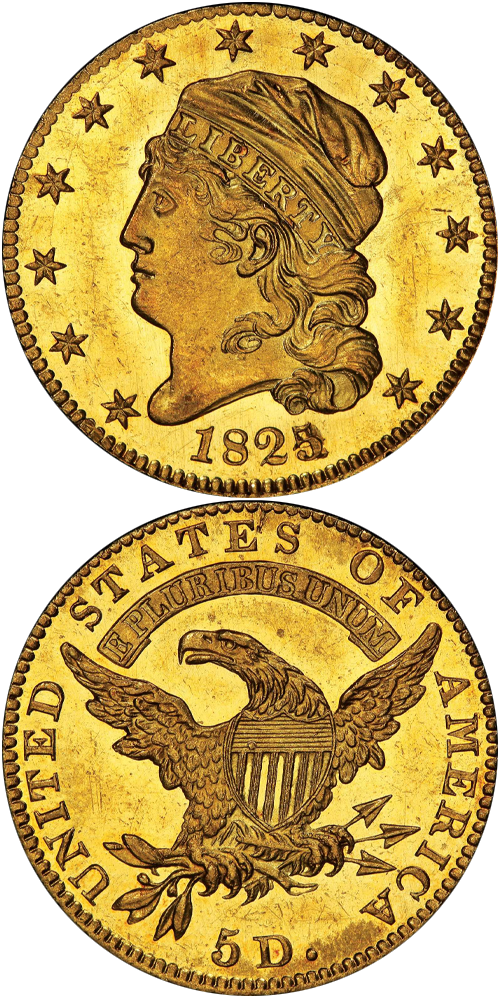1825/4 Capped Head Left Half Eagle
John H. Clapp was one of the country's greatest scholars on the topic of early gold coins and varieties, ranking with Edgar Adams and, of a slightly later generation, Waldo Newcomer. Despite his expertise, Clapp was apparently unaware than the 1825/4 had ever been described before. He excitedly announced his discovery in a letter to the editor of The Numismatist, dated November 5, 1912:
“There are two distinct varieties of the 1825 half eagle. The ordinary variety is the one listed in all catalogues as 'over 21.' This I believe is a mistake, as a careful examination of specimens will show little evidence of it being an overdate, but on the contrary will show that it was simply a slip in the die making a line somewhat resembling a 1. In the Earle sale, I purchased, however, another distinct variety, which is the only specimen of the kind I know of and I have searched all old plated catalogs and have not found another one. It might well be described as over 1824, as the four is very plain under the five and does not in any way look like a 1 nor could it be mistaken for one. From my own observation, I believe this variety to be of the greatest rarity, though of course there may be others.”
The 1825/4 became widely acknowledged as one of the greatest rarities in the United States series, celebrated as rarer than the 1815 or 1822. Edgar Adams wrote in his notebook on half eagle varieties that he had never seen one "after examination of a considerable number of the date." Wayte Raymond's Standard Catalogue published this overdate as "possibly unique." Walter Breen stated in his 1966 monograph that only one was confirmed.
In 1978, the outside world learned about a coin collection that had been known in Marquette, Michigan for decades. Mounted on a wall, Nathan M. Kaufman's collection of gold had been on display since the 1920s at the First National Bank of Marquette. The star of the collection proved to be the second known 1825/4 half eagle. It was featured on the cover of RARCOA's sale catalog of the collection and, as noted in the 1982 Eliasberg catalog, "sold to the Kagin Coin Company for $140,000. The new owners promptly announced that they would have paid much more."
The example to the left was sold by Stack's Bowers Galleries in the D. Brent Pogue Part II Auction, where it realized $940,000.






